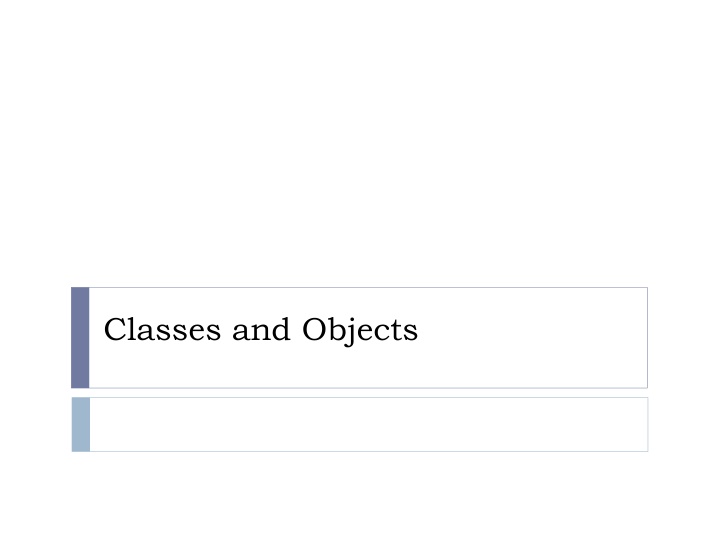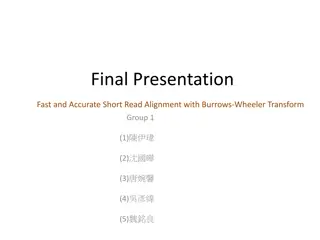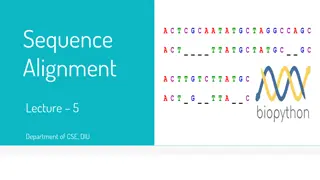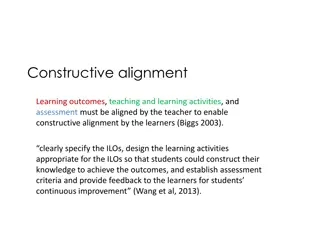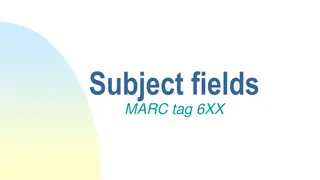Subject-Specific ESD Support for Sustainable Curriculum Alignment
This project led by Lucy Patterson, aims to realign curricula to emphasize sustainability, share barriers, and build an educator network. The event structure includes an open discussion group, quick SDG mapping, and speaker sessions focusing on embedding sustainability in teaching content. There is a focus on specific subjects from January to June, with a call to request specific subjects for future events. Discussions also cover sharing resources and training for ESD implementation in teaching.
Download Presentation

Please find below an Image/Link to download the presentation.
The content on the website is provided AS IS for your information and personal use only. It may not be sold, licensed, or shared on other websites without obtaining consent from the author.If you encounter any issues during the download, it is possible that the publisher has removed the file from their server.
You are allowed to download the files provided on this website for personal or commercial use, subject to the condition that they are used lawfully. All files are the property of their respective owners.
The content on the website is provided AS IS for your information and personal use only. It may not be sold, licensed, or shared on other websites without obtaining consent from the author.
E N D
Presentation Transcript
Object vs. Class A class could be considered as a set of objects having the same characteristics and behavior. An object is an instance of a class. Page 2 Dr. S. GANNOUNI & Dr. A. TOUIR Introduction to OOP
Declaring a Class with Java ClassName - att1: dataType1 - - atti: dataTypei Attributes + m1( ): dataType1 + ... + mj( ): dataTypej Methods (Services) public class ClassName { // Attributes // Methods (services) } Introduction to OOP Dr. S. GANNOUNI & Dr. A. TOUIR Page 3
Declaring Attributes With Java <modifiers> <data type> <attribute name> ; Modifiers Data Type Name public String studentName ; Page 4 Dr. S. GANNOUNI & Dr. A. TOUIR Introduction to OOP
Example of a Class Declaration with Java Course +studentName : string +courseCode : string public class Course { // Attributes public String studentName; public String courseCode ; // No method Members } Page 5 Dr. S. GANNOUNI & Dr. A. TOUIR Introduction to OOP
Object Creation A. The instance variable is allocated in memory. crs Object: Course B. The object is created A studentName courseCode B Course crs; C. The reference of the object created in B is assigned to the variable. crs crs new Course( ) crs = ; Object: Course studentName courseCode Code State of Memory Page 6 Dr. S. GANNOUNI & Dr. A. TOUIR Introduction to OOP
Object Creation A. The instance variable is allocated in memory. crs Object: Course B. The object is created A studentName courseCode B Course crs; C. The reference of the object created in B is assigned to the variable. crs crs new Course( ) crs = ; Object: Course studentName courseCode Code State of Memory Page 7 Dr. S. GANNOUNI & Dr. A. TOUIR Introduction to OOP
Instance VS. Primitive Variables Primitive variables hold values of primitive data types. Instance variables hold references of objects: the location (memory address) of objects in memory. Page 8 Dr. S. GANNOUNI & Dr. A. TOUIR Introduction to OOP
Assigning Objects References to the same Instance Variable crs Course Course A A. The variable is allocated in memory. B Course crs; crs = new Course( ); crs = new Course( ); B. The reference to the new object is assigned to crs. C. The reference to another object overwrites the reference in crs. State of Memory Code Page 9 Dr. S. GANNOUNI & Dr. A. TOUIR Introduction to OOP
Assigning an Object Reference From One Variable to Another crs1 crs2 A Course B A. Variables are allocated in memory. Course crs1, crs2, crs1 = new Course( ); B. The reference to the new object is assigned to crs1. crs2 = crs1; C C. The reference in crs1 is assigned to crs2. State of Memory Code Page 10 Dr. S. GANNOUNI & Dr. A. TOUIR Introduction to OOP
Assigning an Object Reference From One Variable to Another crs1 crs2 A. Variables are allocated in memory. crs1 A. Variables are assigned references of objects. A Course crs2 B Course Course crs1, crs2, crs1 = new Course( ); crs2 = new Course( ); C. The reference in crs2 is assigned to crs1. crs1 crs1 = crs2; Course crs2 Course C Page 11 Dr. S. GANNOUNI & Dr. A. TOUIR Introduction to OOP
Accessing Instance Attributes In order to access attributes of a given object: use the dot (.) operator with the object reference (instance variable) to have access to attributes values of a specific object. instanceVariableName.attributeName course1.StudentName= Sara AlKebir ; course2.StudentName= Maha AlSaad ; course2 course1 Object: Course Object: Course studentName Fahd AlAmri studentName Majed AlKebir courseCode courseCode Introduction to OOP Dr. S. GANNOUNI & Dr. A. TOUIR Page 12
class Course { Course // Instance attributes public String studentName; public String courseCode ; +studentName : string +courseCode : string } public class CourseRegistration { public static void main(String[] args) { Course course1, course2; //Create and assign values to course1 course1 = new Course( ); course1.courseCode= new String( CSC112 ); course1.studentName= new String( Sara AlKebir ); //Create and assign values to course2 course2 = new Course( ); course2.courseCode= new String( CSC107 ); course2.studentName= new String( Maha AlSaad ); course1.courseCode); System.out.println(course2.studentName + " has the course + course2.courseCode); } } CourseRegistration +main() System.out.println(course1.studentName+ " has the course + Page 13 Dr. S. GANNOUNI & Dr. A. TOUIR Introduction to OOP
Practical hint Class Course will not execute by itself It does not have method main CourseRegistration uses the classCourse. CourseRegistration, which has method main, creates instances of the class Course and uses them. uses CourseRegistration Course +studentName : string +courseCode : string +main() Page 14 Dr. S. GANNOUNI & Dr. A. TOUIR Introduction to OOP
Modifiers Static Public+ Private - Protected #
Static It used to define class attributes and methods. Class attributes (and methods): live in the class can also be manipulated without creating an instance of the class. are shared by all objects of the class. do not belong to objects states. <modifiers> <data type> <attribute name> ; Modifiers Data Type Name public static int studentNumber ; Page 18 Dr. S. GANNOUNI & Dr. A. TOUIR Introduction to OOP
Class Attributes Access Class attributes (and methods) can also be manipulated without creating an instance of the class. <class name>.<attribute name> Class Name Attribute Name Course.studentNumber = 0 ; Page 19 Dr. S. GANNOUNI & Dr. A. TOUIR Introduction to OOP
class Course { // attributes public String studentName; public String courseCode ; public static int studentNumber; } public class CourseRegistration { public static void main(String[] args) { Course course1, course2; //Create and assign values to course1 course1 = new Course( ); Course.studentNumber = 1; course1.courseCode= new String( CT1513 ); course1.studentName= new String( Sara AlKebir ); //Create and assign values to course2 course2 = new Course( ); Course.studentNumber ++; course2.courseCode= new String( CSC107 ); course2.studentName= new String( Maha AlSaad ); course1.courseCode + + course1.studentNumber); System.out.println(course2.studentName + " has the course + course2.courseCode + + course2.studentNumber); } } CourseRegistration +main() System.out.println(course1.studentName+ " has the course + Page 20 Dr. S. GANNOUNI & Dr. A. TOUIR Introduction to OOP
public and private modifiers Let s consider a class X. Let s consider Y a client class of X. Y is a class that uses X. Attributes (and methods) of X declared with the public modifier are accessible from instances of Y. The public modifier does not guarantee the information hiding. Attributes (and methods) of X declared with the private modifier are not accessible from instances of Y. The private modifier guarantee the information hiding. 22
Accessibility from Inside (the Instance itself) - Accessible - Inaccessible object:X public private All members of an instance are accessible from the instance itself. 23
Accessibility from an Instance of another Class object:X - Accessible - Inaccessible Accessibility from The Client class. public private :Y(client) Only public members Are visible from outside. All else is hidden from Outside. 24
UML Representation of a Class (UML Class Diagram) UML uses three symbols to represent the visibility of the class members. + : mentions that the member is public. - : mentions that the member is private. ClassName - att1: dataType1 - - atti: dataTypei Attributes + m1( ): dataType1 + ... + mj( ): dataTypej Methods (Services) 26
Declaring Private Attributes <modifiers> <data type> <attribute name> ; Modifiers Data Type Name private String studentName ; 27
Example of a Class with Private attributes ClassName - studentName: String - courseCode: String public class Course { // Attributes private String studentName; private String courseCode ; // No method Members } 28
class Course { // Data Member private String studentName; private String courseCode ; } public class CourseRegistration { public static void main(String[] args) { Course course1, course2; //Create and assign values to course1 course1 = new Course( ); course1.courseCode= Ct1513 ; course1.studentName= Sara AlKebir ; //Create and assign values to course2 course2 = new Course( ); course2.courseCode= CSC107 ; course2.studentName= Maha AlSaad ; course1.courseCode); System.out.println(course2.studentName + " has the course + course2.courseCode); System.out.println(course1.studentName+ " has the course + } } 29
Accessibility Example class Service { public int memberOne; private int memberTwo; Service obj = new Service(); public void doOne() { obj.memberOne = 10; obj.memberTwo = 20; } private void doTwo() { obj.doOne(); } obj.doTwo(); } Client Service 30
Method Declaration Method declaration is composed of: Method header. Method body <method header> { <method body> } 32
Method Declaration (cont.) <modifiers> <return type> <method name> ( <parameters> ){ <method body> } Modifier Return Type Method Name Parameters public void setOwnerName ( String name ) { ownerName = name; Method body } 33
Example of Methods with No-Parameters and No-Return value import java.util.Scanner; public class Course { // Attributes private String studentName; private String courseCode ; private static Scanner input = new Scanner(System.in); //Class att. // Methods public void enterDataFromKeyBoard() { System.out.print ( Enter the student name: ); studentName = input.next(); } System.out.print ( Enter the course code: ); courseCode = input.next(); public void displayData() { System.out.println ( The student name is: + studentName); System.out.println ( The the course code is: + courseCode); } } 34
Method Invocation Invoking a method of a given object requires using: the instance variable that refers to this object. the dot (.) operator as following: instanceVariable.methodName(arguments) public class CourseRegistration { public static void main(String[] args) { Course course1, course2; //Create and assign values to course1 course1 = new Course( ); course1.enterDataFromKeyBoard(); course1.display(); //Create and assign values to course2 course2 = new Course( ); course2.enterDataFromKeyBoard(); course2.display(); } } 35
Method Invocation Execution Schema class Client { class X { public static void main(String[] arg) { X obj = new X(); // Block statement 1 obj.method(); // Block statement 2 } . . . public void method() { // Method body } . . . } . . . } The client Block statement 1 executes Passing Parameters if exist Return result if any The method Invocation The method body starts The method body finishes Block statement 2 starts The client 36
Example of a Method with Return value public class Student { // Attributes private String studentName; private int midTerm1, midTerm2, lab, final ; // Methods public int computeTotalMarks() { int value = mid1 + mid2 + lab + final; } } return value; public class TestStudent { public static void main (String [] args) { Student st = new Student(); int total; } } total = st.computeTotalMarks(); System.out.println(total); 37
Template for Methods with Return value public class ClassName { // Attributes ... // Methods ... public returnType methodName( ) { returnTypevariableName; // 1 - calculate the value to return // 2 - assign the value to variableName return variableName; } } public class ClientClass { public static void main (String [] args) { ClassName instanceVariable = new ClassName(); returnTypereceivingVaraiable; ... } } receivingVaraiable = instanceVariable.methodName( ); ... 38
Arguments and Parameters An argument is a value we pass to a method. A parameter is a placeholder in the called method to hold the value of the passed argument. Formal parameter class Sample { class Account { public static void main(String[] arg) { Account acct = new Account(); . . . acct.add(400); . . . } . . . public void add(double amt) { balance = balance + amt; } . . . } . . . } Argument (Actual Parameter) 39
Programming Example: Largest Number Input: set of 10 numbers Output: largest of 10 numbers Solution Get numbers one at a time Method largest number: returns the larger of two numbers For loop: calls method largest number on each number received and compares to current largest number Java Programming: From Problem Analysis to Program Design, 4e 40
Solution: Largest Number public static doublelarger (doublex, doubley) { if(x >= y) returnx; else returny; } public static void main(String[] args) { double num; double max; int count; System.out.println("Enter 10 numbers."); num = console.nextDouble(); max = num; for (count = 1; count < 10; count++) { num = console.nextDouble(); max = larger(max, num); } System.out.println("The largest number is " + max); Java Programming: From Problem Analysis to Program Design, 4e 41
Sample Run: Largest Number Sample Run Enter 10 numbers: 10.5 56.34 73.3 42 22 67 88.55 26 62 11 The largest number is 88.55 Java Programming: From Problem Analysis to Program Design, 4e 42
Getter, Setter and Constructor Information Hiding 43
How Private Attributes could be Accessed Private attributes are accessible from outside using accessor operations. Getters Setters 44
class Course { // Data Member private String studentName; private String courseCode ; } public class CourseRegistration { public static void main(String[] args) { Course course1, course2; //Create and assign values to course1 course1 = new Course( ); course1.courseCode= CT1513 ; course1.studentName= Sara AlKebir ; //Create and assign values to course2 course2 = new Course( ); course2.courseCode= CT1413 ; course2.studentName= Maha AlSaad ; course1.courseCode); System.out.println(course2.studentName + " has the course + course2.courseCode); System.out.println(course1.studentName+ " has the course + } } 45
Template for Getters public class ClassName { private dataType1attribute1; . . . private dataTypenattributen; . . . public dataType1 getAttribute1() { return attribute1; } . . . public dataTypen getAttributen() { return attributen; } . . . } 46
Template for Setters public class ClassName { private dataType1attribute1; . . . private dataTypenattributen; . . . public void setAttribute1(dataType1param){ attribute1 = param; } . . . public void setAttributen(dataTypenparam) { attributen = param; } . . . } 47
public class Course { // Attributes private String studentName; private String courseCode ; ... public String getStudentName() { return studentName; } public String getCourseCode() { return courseCode; } ... public void setStudentName(String val) { studentName = val; } public void setCourseCode(String val) { courseCode = val; } } 48
public class CourseRegistration { public static void main(String[] args) { Course course1, course2; //Create and assign values to course1 course1 = new Course( ); course1.setCourseCode( CT1513 ); course1.setStudentName( Sara AlKebir ); //Create and assign values to course2 course2 = new Course( ); course2.setCourseCode( CT1413 ); course2.setStudentName( Maha AlSaad ); " has the course + course1.getCourseCode()); System.out.println(course2.getStudentName() + " has the course + course2.getCourseCode()); System.out.println(course1.getStudentName()+ } } 49
Class Constructors A class is a blueprint or prototype from which objects of the same type are created. Constructors define the initial states of objects when they are created. ClassName x = new ClassName(); A class contains at least one constructor. A class may contain more than one constructor. 50
The Default Class Constructor If no constructors are defined in the class, the default constructor is added by the compiler at compile time. The default constructor does not accept parameters and creates objects with empty states. ClassName x = new ClassName(); 51
